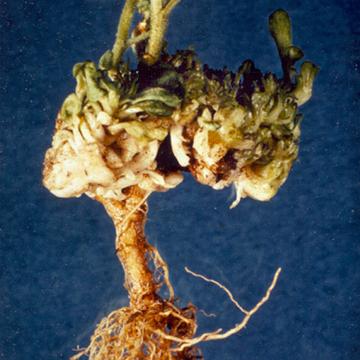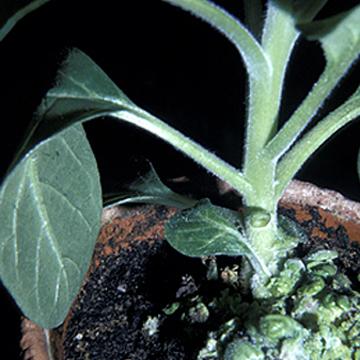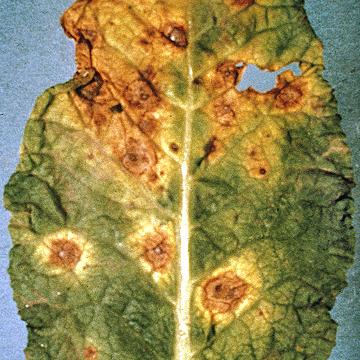DISEASE: Bacterial fasciation (Leafy gall)
HOST: Petunia
Note hyperplasia and leafy galls.

Bacterial fasciation (Leafy gall) | Petunia
DISEASE: Bacterial fasciation (Leafy gall)
HOST: Petunia (Petunia sp.)
PATHOGEN: Rhodococcus fascians
SOURCE: M. Shurtleff
DISEASE: Bacterial fasciation (Leafy gall)
HOST: Petunia
Leaf proliferation at crown region.

Bacterial fasciation (Leafy gall) | Petunia
DISEASE: Bacterial fasciation (Leafy gall)
HOST: Petunia (Petunia hybrida)
PATHOGEN: Rhodococcus fascians
SOURCE: R. Raabe
DISEASE: Bacterial fasciation (Leafy gall)
HOST: Tobacco
Bacterial fasciation of tobacco.

Bacterial fasciation (Leafy gall) | Tobacco
DISEASE: Bacterial fasciation (Leafy gall)
HOST: Tobacco (Nicotiana tabacum)
PATHOGEN: Rhodococcus fascians
SOURCE: R. Raabe
DISEASE: Bacterial fasciation (Leafy gall)
HOST: Viola (Horned violet)
The disease causes distortion and overgrowth of axillary buds.

Bacterial fasciation (Leafy gall) | Viola (Horned violet)
DISEASE: Bacterial fasciation (Leafy gall)
HOST: Viola (Horned violet) (Viola cornuta)
PATHOGEN: Rhodococcus fascians
SOURCE: M. Putnam
DISEASE: Pseudomonas leaf spot
HOST: Marigold
Marigolds with yellow apical chlorosis attributed to toxin production by the pathogen.
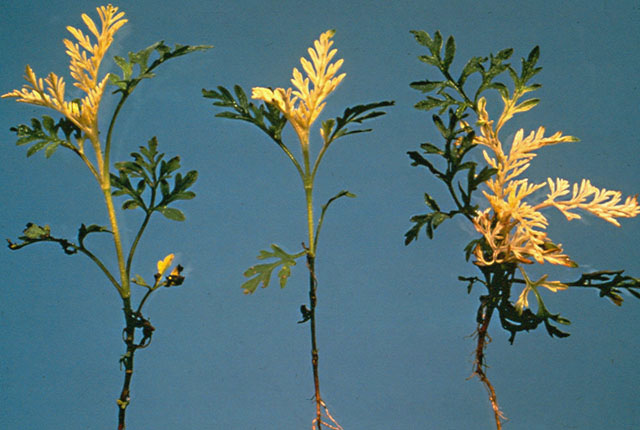
Pseudomonas leaf spot | Marigold
DISEASE: Pseudomonas leaf spot
HOST: Marigold (Tagetes erecta)
PATHOGEN: Pseudomonas syringae pv. tagetis
SOURCE: R. Durbin
DISEASE: Pseudomonas leaf spot
HOST: Marigold
Chlorotic leaves with total loss of chlorophyll. Disease is also known as toxic chlorosis.
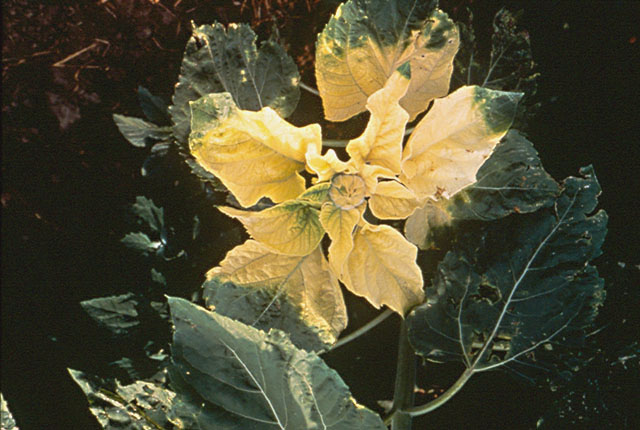
Pseudomonas leaf spot | Marigold
DISEASE: Pseudomonas leaf spot
HOST: Marigold (Tagetes erecta)
PATHOGEN: Pseudomonas syringae pv. tagetis
SOURCE: R. Durbin
DISEASE: Pseudomonas leaf spot
HOST: Marigold
Plants with bright yellow apical chlorosis.

Pseudomonas leaf spot | Marigold
DISEASE: Pseudomonas leaf spot
HOST: Marigold (Tagetes patula)
PATHOGEN: Pseudomonas syringae pv. tagetis
SOURCE: R. Durbin
DISEASE: Pseudomonas leaf spot
HOST: Primrose
Leaf with brownish red spots and reddening of adjacent areas. Disease begins as small, water-soaked lesions that later coalesce into large necrotic spots.
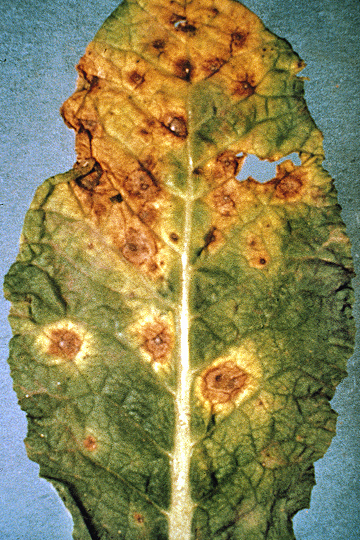
Pseudomonas leaf spot | Primrose
DISEASE: Pseudomonas leaf spot
HOST: Primrose (Primula sp.)
PATHOGEN: Pseudomonas syringae pv. primulae
SOURCE: APS


